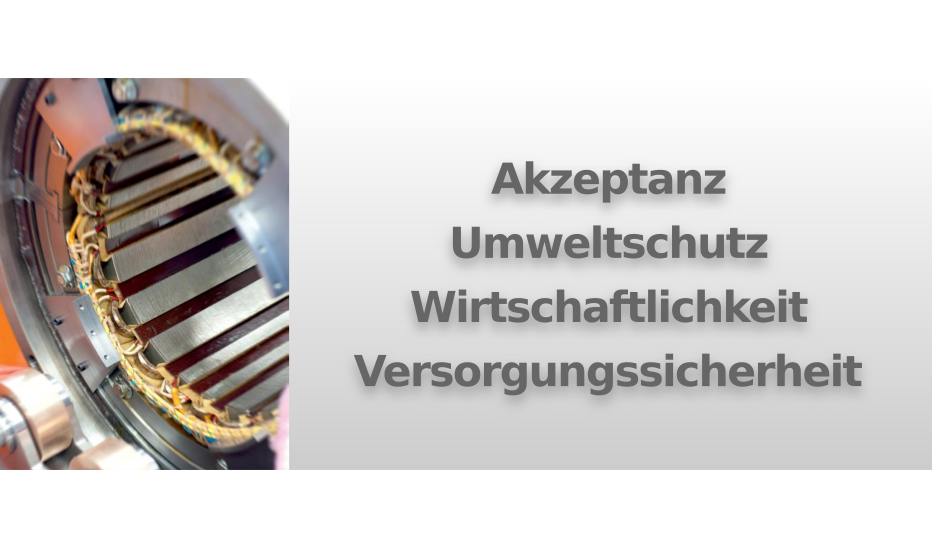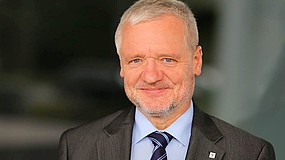Functionally integrated energy storage systems in the context of the energy policy quadrangle

Motivation
The move away from fossil fuels to CO2-free renewable energies for the provision of electrical energy requires new approaches for a continuous energy supply. When using the sun and wind as energy sources, it must be ensured that electricity is always available for households and industry, even when the sun is not shining or the wind is not blowing. This can only be achieved by storing surplus energy and using it at times when it cannot naturally be generated, e.g. at night or when there is no wind. This storage is essentially mechanical, chemical or electrical, but can also take place in combination. The amount of energy stored over time determines the intended use (long-term or short-term storage).
Possibilities of mechanical energy storage
Energy has been stored in pumped storage plants for decades. During off-peak periods, water is pumped into a higher storage basin using electrically operated pumps. When required, it is released again via turbines and the stored energy is converted into electrical energy. This allows peak loads to be covered, for example.
Another option is to store energy in a flywheel, which is also used in a potter's wheel. In this case, a flywheel mass is set in a rotary motion, which prevents rapid braking and ensures that the motion is evened out. Of course, this only works for a certain amount of time and is also largely dependent on how the flywheel mass is mounted. A low-friction and therefore low-loss bearing is advantageous here. If this is not sufficient, there are various ways of increasing the storage capacity: For example, you can increase the speed or the mass, and you can also change the geometry of the flywheel mass. However, all of this is limited by the properties of the material used for the flywheel mass. High energy content means high rotational speeds with large dimensions and requires particularly strong material; even steel reaches its limits here.
Solution approach
Carbon fiber-reinforced plastic (CFRP) has proven to be particularly suitable for such high loads. Here, carbon fibers are embedded in synthetic resin. When cured, its mechanical properties of tensile strength and rigidity are particularly high, which means that high rotational speeds and high circumferential speeds can be achieved. However, the density is much lower than that of steel. The challenge in achieving a high energy density therefore lies in optimizing the geometry of the flywheel mass for high speeds and making it suitable for the load. To achieve this, a manufacturing technology must be developed that guarantees fault-free production of the CFRP rotor and thus safe and reliable operation of the flywheel mass at the highest speeds. Sensors can be integrated into the fiber composite to monitor the dynamically highly stressed flywheel mass.
If the flywheel mass is integrated with its bearings and the electric machine as a motor-generator unit, the result is a compact arrangement. The modular design allows several systems to be interconnected in a network and thus the system size to be adapted to the user's requirements.
Project partners
The development is being carried out in a division of labor between the Fraunhofer IWU and the IPM of the HSZG, both institutions on the university campus in Zittau. The main task of the IWU is the development, design and construction of a suitable fiber composite material and the manufacturing technology as well as the development of a technology for connecting the metallic rotor parts into the fiber composite. The IPM is responsible for the design and development of a suitable low-loss magnetic bearing, the selection of a motor-generator unit suitable for the targeted speed range, the sensor technology for online condition monitoring and the necessary control and regulation technology.
Become part of the solution
Join us on our mission for green energy and help us develop solutions to implement the energy transition, the transition from burning fossil fuels to generating electricity from renewable energies. Let's build a sustainable future together!
Funding
The project is funded by the BMWi as part of the "STARK" program for strengthening transformation dynamics and new departures in coal mining areas and at coal-fired power plant sites. The results serve to achieve the international and national climate protection goals as well as the ecologically sustainable and resource-efficient structural strengthening of the regions affected by the coal phase-out.
